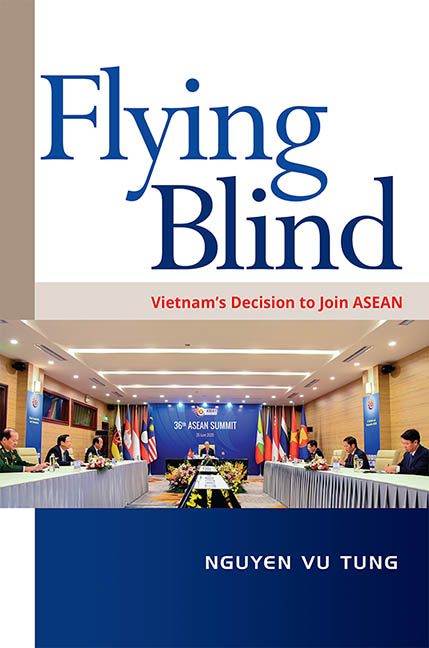Book contents
- Frontmatter
- Contents
- Acknowledgements
- Glossary
- 1 Introduction
- 2 The Paris Agreement and Vietnam: ASEAN Relations in the Early 1970s
- 3 1978 to 1985: Coexistence Between Two Opposing Groups
- 4 Joining ASEAN: Political and Strategic Factors
- 5 Jumping on a Moving Train: Vietnam Joins ASEAN
- 6 ASEAN Membership and Vietnam’s Shifting National Identity
- 7 Conclusion
- References
- Index
- The Author
3 - 1978 to 1985: Coexistence Between Two Opposing Groups
Published online by Cambridge University Press: 08 October 2021
- Frontmatter
- Contents
- Acknowledgements
- Glossary
- 1 Introduction
- 2 The Paris Agreement and Vietnam: ASEAN Relations in the Early 1970s
- 3 1978 to 1985: Coexistence Between Two Opposing Groups
- 4 Joining ASEAN: Political and Strategic Factors
- 5 Jumping on a Moving Train: Vietnam Joins ASEAN
- 6 ASEAN Membership and Vietnam’s Shifting National Identity
- 7 Conclusion
- References
- Index
- The Author
Summary
In what was termed the first round of reconciliation, there were improvements in the Vietnam-ASEAN relationship in the 1975–78 period. Yet, they were not enough to construct a cooperative relationship between Vietnam and ASEAN. What was missing were mutual trust, Vietnamese non-recognition of ASEAN, and in particular its view about a new role in regional politics.
The previous chapter has analysed the reasons for Hanoi's hardening attitude towards ASEAN. As a result, from 1975 to early 1977, Hanoi adopted a less than friendly attitude towards ASEAN and its member states, in spite of various advances by the latter, and specifically a proposal for Vietnam to accede the TAC. But from the end of 1977, Hanoi took the initiative in improving its relations with ASEAN as witnessed by the July 1977 visit by Deputy Foreign Minister Phan Hien to ASEAN countries and the start of negotiations with Indonesia on sea boundaries in November 1977. In addition, the December 1977 visit by Foreign Minister Nguyen Duy Trinh to ASEAN countries was marked by the conclusion of several economic agreements and the agreement for the establishment of Thai and Vietnamese embassies in Hanoi and Bangkok. Further, in September 1978, Prime Minister Pham Van Dong visited some ASEAN countries and promised to refrain from supporting local rebellions, interfering in their internal affairs, and using force against them. All these actions should not be seen as a breakthrough in Vietnam-ASEAN relations as there was still an absence of trust on both sides and Hanoi sought improvement in relations mainly because of the rising tension and hostility in its relations with Beijing and the Khmer Rouge.
Indeed, during the visit of Prime Minister Pham Van Dong, there was no frank and extensive exchange of views on the Khmer Rouge issue and how it should be solved. Instead, Hanoi offered a Friendship Treaty, a move to which ASEAN countries were not eager to respond, to forestall possible reaction from ASEAN towards its action in Kampuchea. Thereafter, as soon as Vietnamese troops entered Kampuchea, Thailand allied itself with the PRC to oppose the Vietnamese move and could subsequently rally the support of all other ASEAN countries to its cause. As a result, for more than ten years, confrontation took place between Vietnam and ASEAN countries and Southeast Asia was divided into two opposing blocs.
- Type
- Chapter
- Information
- Flying Blind , pp. 40 - 75Publisher: ISEAS–Yusof Ishak InstitutePrint publication year: 2021



